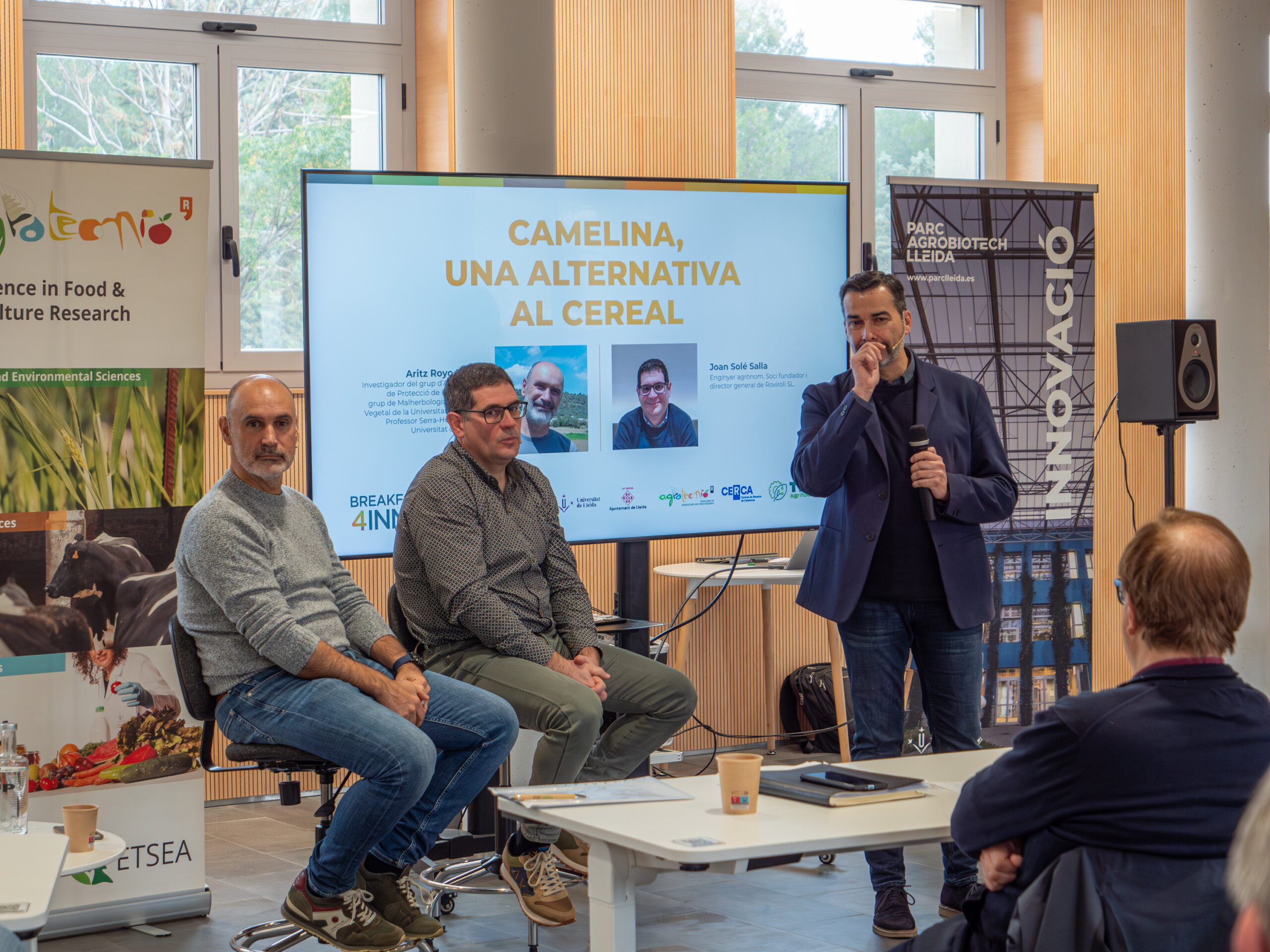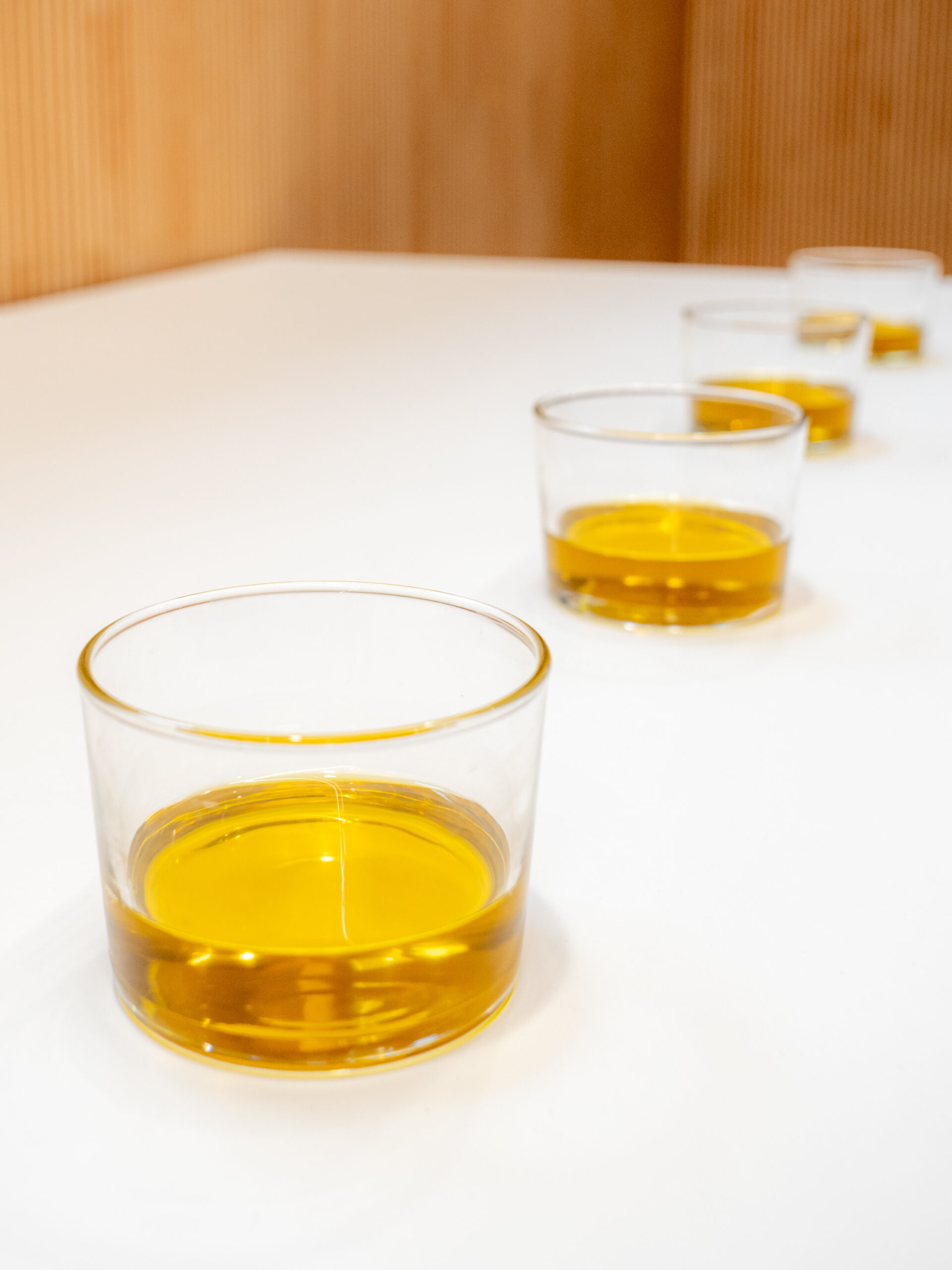- The new informative lunch Breakfast4inno of Agrotecnio and the Agrobiotech Park has addressed the benefits of camelina cultivation, as an alternative to cereals
- This plant needs less water investment and has a high content of healthy fats.

The characteristics of camelina and the benefits of including this crop in agricultural systems have focused the debate of the new Breakfast4Inno, jointly organised by Agrotecnio and the Agrobiotech Park of Lleida.
In recent years, Catalonia has faced a serious drought situation, which has affected the use of water in irrigated fields, productivity and crop viability. In this context, camelina is presented as a good alternative to cereal, as it is a crop that is well adapted to Mediterranean climates and is very tolerant to drought. It needs less water investment to obtain excellent yields, and furthermore, the products obtained from camelina have great industrial potential due to their high content of mono and polyunsaturated acids.
As Aritz Royo Esnal, a researcher with the Crop Protection Agrotechnology group and the Malherbology and Plant Ecology group at the University of Lleida, explained, including this crop in the systems has numerous advantages. Firstly, it has agronomic benefits since, due to its short life cycle, it is a good tool for controlling weeds and contributes to the reduction of phytosanitary products. It is also important is the saving of irrigation water it needs, since compared to cereals, camelina has the highest yield with the least amount of water. In fact, it is estimated that it needs 1/3 as much water as rapeseed, for example.
‘Camelina has a short life cycle, which makes it easy to complement with other crops. It is also a very good competitor against weeds and its yield with support irrigation is excellent: we have managed to exceed 3,000 kilogrammes per hectare’, explained Royo.
On the other hand, the agricultural engineer and general manager of the company Roviroli SL, Joan Solé Salla, spoke of the market possibilities for this plant. The by-products that are extracted (oil and filter cake) have a considerable amount of omega-3, omega-6 and also protein.
The manager of Roviroli explained that ‘its cultivation has many possibilities in the Lands of Lleida, but we need to get more out of it, we need more commercial outlets that value what it is really worth’. Currently, the filter cake (flour) from the camelina is sold exclusively for the production of pig and calf feed, but according to Solé, ‘new markets could be explored, such as horse feed, aquaculture, pet food or human food’. ‘And the oil, which is currently sold as a biofuel for aviation, could be sold in the human food, food products, cosmetics or pharmaceuticals sectors,’ he concluded.
The efficiency and applicability of camelina cultivation is being studied through a research project led by Roviroli and involving a total of four Agrotecnio research groups: Crop Protection, Malherbology and Plant Ecology, New Food Technologies and Animal Breeding and Welfare. In addition to Roviroli, the companies Comercial Agrícola Perera and Cotécnica are also participating in the project.
The fascinating world of truffles, next discussion
With the increasing demand for truffles for gastronomy, there is growing interest in the cultivation and sale of these mushrooms. Catalonia stands out for its extensive surface area suitable for the cultivation of tubericulture, especially in areas where the activities of the truffle-growing industry are not very common, and where there is a growing demand for truffles.

